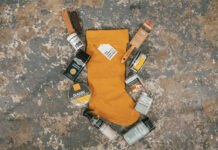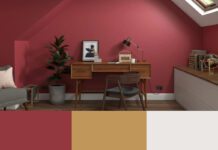Just when ordinary folk have got used to the ‘new’ decorative style, with shabby chic sweeping out the old, pre-recession hotel-style décor, it’s all change again. Surf the net and you’d be forgiven for thinking shabby chic is already dead. But that’s only if you’re a fashion-driven interior designer, constantly chasing the next big thing.
The Spectator was going on about the death of shabby chic in 2010, before most of us had even heard of it. The same goes for The Independent, which joined The Spectator in 2010 proclaiming the look’s death. Several other respected publications, both here and abroad, also decided the style was as dead as a dodo in 2010, when it had only just started to go properly mainstream. On the other hand, other articles sent out a rallying cry, inspiring shabby chic fans to gird their loins and prepare for another year of tatty loveliness, tipping the style as hot through 2015 and beyond.
Many of us have only just broken out of minimalism, never mind taken our interiors in brave new directions. So what’s going on out there in the world of home décor? Have you missed the shabby chic boat and if so, does it matter?
Has the trend for shabby chic ended?
Some say it’s dead, others are just discovering it. Who to believe? It’s a tricky one.
While the relatively few people who slavishly follow interior décor trends have probably already ditched shabby chic years ago, the rest of us tend to tail behind. As a hot trend shabby chic’s prime time may have come and gone five years ago, but all you need to do is visit your nearest antique and collector’s emporium and you’ll find it’s more than likely still stuffed to the gills with DIY shabby chic masterpieces. The same goes for high street furniture stores, where French interior décor often still rules the fashion roost.
Shabby chic décor grows up
Rather than coming and going quickly and obviously, with a beginning, middle and end, the trend for shabby chic seems to have gradually changed over the years. At first the most fashionable, cutting edge interiors were pale and interesting in misty greys and warm creams, clean white and watery old rose, the palest sage greens and quirky eggshell blues.
As time passed the colours became more definite, less pastel cool and more funky fun, and the style moved towards, then through, French country house style and out of the other end. Black, deep sage green, aubergine, magenta and scarlet shabby interiors eventually took the interiors high ground, but shabby was still the name of the game.
Is interior décor a fashion thing or a comfort thing?
The thing is, for most people interior décor is a personal thing, a comfort thing, a practical thing, a feeling at home thing. It isn’t a fashion thing. We don’t tend to change our homes every year or two or every season in line with changing trends, like we do with clothes. We find stuff we like, whether it’s old or new, then we live with it until we fancy a change or it falls to bits.
While many of us get ready to dip our toes in the shabby chic waters for the first time, the trend setters are busy creating something new and exciting. So what’s next on the interiors menu?
About vintage-style home interior décor
Turn on the telly and it’s everywhere. Trot down to your nearest fabric shop and you’ll notice a dramatic resurgence of 1950s patterns and colours. The shape of furniture is changing too, with new items taking on a vintage edge. Cutting edge interior designers everywhere are creating uber-funky retro interiors stuffed with mid-twentieth century almost-antiques and 1950s-1970s vintage delights. New furniture and decorative items are being inspired by post war, post rationing, post-shabby style.
As an interior décor style it’s colourful. It’s optimistic. And it’s also great fun, since it’s eclectic enough for everyone to enjoy. Very few of us can afford a stylish 1970s living room cabinet from a top London vintage store, something by G Plan, Ercol or similar, a piece that was excellent quality when it was first made and now retails at more than £1000. But most of us can swing to something equally stylish from a local charity shop, vintage emporium or furniture recycling outlet for a few tens of pounds or, worst case scenario, a couple of hundred.
Just like shabby chic, 1950s-1970s style is taking its time going mainstream. It might feel and look very different but it actually continues the recycling and re-purposing ethic that shabby chic is so famous for. It’s all about bringing vintage and retro stuff – until very recently regarded as tat – back to vibrant life. It’s all about appreciating recent styles and giving semi-old, non-antique items a new lease of life. While a lot of us still look at a piece of 1970s G Plan furniture and wince, it’s actually hot interior design property.
Are you there yet? If you’re feeling the first stirrings of pleasure in a decorative style you either despised the first time around or are too young to remember, it’s time to learn the wood veneer basics, a staple of the era.
The joy of wood veneer – Vintage style hits home
We’re in the business of making wood look good, so we’re always happy to talk veneer. An awful lot of lower-end and high end vintage and retro furniture features veneer instead of being made from 100% solid wood. Wood veneer is a thin sheet of real wood fixed over a cheaper wood structure, often intended to make the piece of furniture look like an expensive hardwood. Its strength depends on the type of wood it’s made from, but all veneer should be treated with care.
If you’ve just bought a vintage piece and the veneer’s a bit iffy, how do you clean and maintain it? Here’s some useful advice for you to refer to if and when you ditch your shabby chic habit and go retro!
- Keep veneered furniture out of direct sunlight to prevent fading
- Clean the veneered surface with a cotton or slightly damp microfiber cloth. Wipe the surface gently, following the direction of the grain, to get rid of light dirt and dust
- Get rid of tough dirt with a mixture of a teaspoon of oil soap or mild soap flakes and 2 cups of warm water, also using a microfiber cloth
- Dry the surface carefully with a dry cloth, since damp veneer can easily warp
Here’s a link to an excellent resource about wood veneer maintenance. And if you need to repair and renovate a piece of veneer furniture, here’s a good YouTube video showing you how to restore warped wood veneer:
What about your next interior décor move?
Have you just decided retro is the way to go? Are you still mulling over whether to go French country house style? We’d love to know about your next wood-led interior décor project. Leave a comment below.




